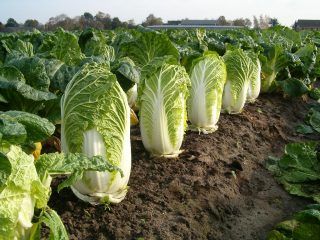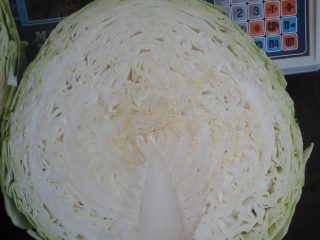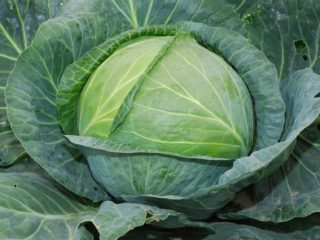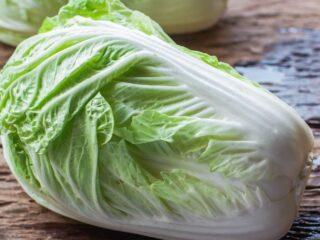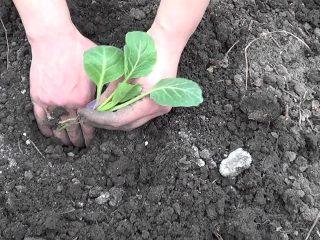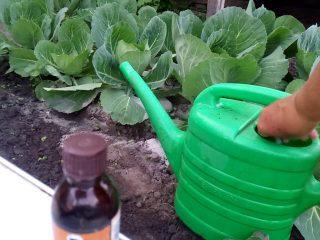Content
To get a good harvest, you need to grow healthy seedlings at the beginning of the season. And cabbage is no exception. However, by the time this vegetable is planted, there is not much free space left on window sills, shelves and other possible horizontal surfaces, since many early crops have already been planted. Therefore, cabbage seedlings in diapers and snails have recently become a real discovery for gardeners. After all, the use of this technology makes it possible to grow a sufficient number of seedlings with a minimum of space. However, to do this, you need to study the features of the method in advance in order to avoid serious mistakes.
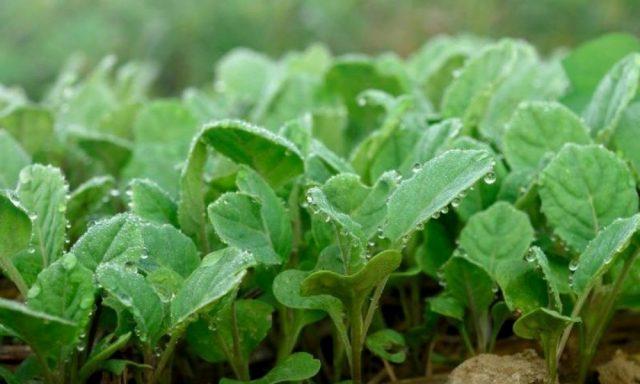
Snails and diapers make it possible to obtain strong seedlings without soil
Is it possible to plant cabbage in diapers and snails?
Judging by the feedback from gardeners, the use of this new method of growing vegetable seedlings gives good results. Plants have the opportunity to fully develop without competing for food.This technology for producing strong, healthy seedlings is suitable for almost any crop, the seeds of which germinate without light. Therefore, growing cabbage in diapers and snails is also possible, and, as practice has shown, with further planting in the ground, the seedlings quickly adapt, since their root system is not damaged.
Pros and cons of the method
This method of growing seedlings has many advantages, which is why it has gained wide recognition among beginners and experienced gardeners. However, it also has certain disadvantages that are worth paying attention to.
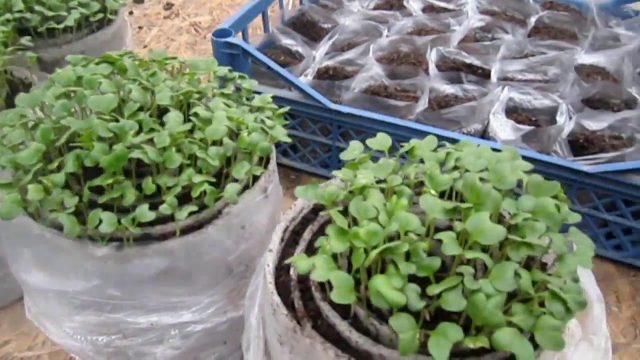
Planting in snails and diapers is the most economical way to grow seedlings
The main advantages of this technology:
- low cost of materials;
- the root system of seedlings develops well;
- ease of transfer;
- rapid seed germination;
- protection of roots from mechanical damage;
- high performance;
- a large number of plants takes up little space;
- possibility of growing without land;
- ease of fertilizing using water-soluble fertilizers;
- reuse of the structure.
Disadvantages of the method:
- likelihood of root rot;
- the need for regular monitoring of lighting uniformity.
How to plant cabbage seedlings in a snail
The technology for growing cabbage seedlings without soil in a snail requires preliminary preparation of material and seeds. It is also necessary to properly sow the structure so that the plants have the opportunity to fully develop in the future. Therefore, you need to familiarize yourself in advance with all the intricacies of growing cabbage without land.
Preparation of material
A laminate underlay, which can be purchased at any hardware or hardware store, is ideal for the snail.It should be no more than 2 mm thick and not have a covering layer of foil.
Other materials needed to create a snail:
- two- or three-ply toilet paper;
- tape or rubber bands;
- spray;
- scissors;
- container for the finished structure.
Before sowing cabbage into a snail, it is necessary to cut the substrate into strips 10 cm wide and no more than 1 m long. In the future, all manipulations are carried out directly during sowing and formation of the snail.
Seed preparation
In order for the grown seedlings to be healthy, you need to first prepare the seeds. To do this, you will need to initially pour the planting material onto a sheet of white paper, carefully inspect and remove all damaged and too small specimens, if any.
Then the cabbage seeds should be disinfected. To do this, it is recommended to prepare a slightly pink solution of potassium permanganate and dip the planting material in it for 15 minutes, and then rinse with plain water. At the end of the procedure, the cabbage seeds must be dried until characteristic flowability appears.
If desired, you can carry out preliminary germination before planting. This will allow you to grow cabbage seedlings in a snail in the shortest possible time. In this case, you need to wet the bandage, fold it in several layers, pour planting material onto the fabric, make a small bundle and put it in an airtight container, leaving the lid slightly open for air circulation. The seeds should be inspected daily and, if necessary, a bandage should be moistened to prevent them from drying out. When friendly shoots appear, it is recommended to plant them.
Sowing cabbage seeds for seedlings in a snail
Sowing cabbage into a snail does not require complicated steps, so it will not be difficult to do even for gardeners with no experience.
Procedure:
- Place toilet paper folded in 2-4 layers on a strip of backing.
- Moisten it with a spray bottle.
- Place the cabbage seeds at a distance of 1-2 cm from the top edge, maintaining a distance of 2 cm.
- Cover them with toilet paper folded in 2-3 layers.
- Moisturize it.
- Roll the backing into a roll and secure it with tape and an elastic band.
After planting, the snail must be placed in a container, cover its upper part with a bag and place it in a warm, dark place with a temperature of +18-20 °C.
Features of care
Growing cabbage seedlings in snails without soil does not require complicated care. After the sprouts appear, the structure should be moved to a light windowsill and the maintenance regime should be lowered to +15-17 °C. It is necessary to water the seedlings regularly from the top, leaving water in the pan. Humidify once every 2-3 days, depending on the temperature. It is recommended to periodically add mineral complex fertilizer for seedlings to the water so that the seedlings receive adequate nutrition.
Caring for cabbage in a snail also involves regularly monitoring the lighting. Therefore, it is recommended to periodically turn the structure with the other side towards the window. In the case of pulling seedlings, you need to organize lighting in the evening, placing the lamp at a height of 30 cm above the plants.
When 2-3 true leaves appear, the snail needs to be unwound and a layer of nutrient substrate is added.After this, you need to moisten it evenly from a spray bottle, roll the backing into a roll and fix it. Adding substrate will allow the root system of seedlings to adapt to the soil, strengthen it and prepare it for subsequent planting in a permanent place.
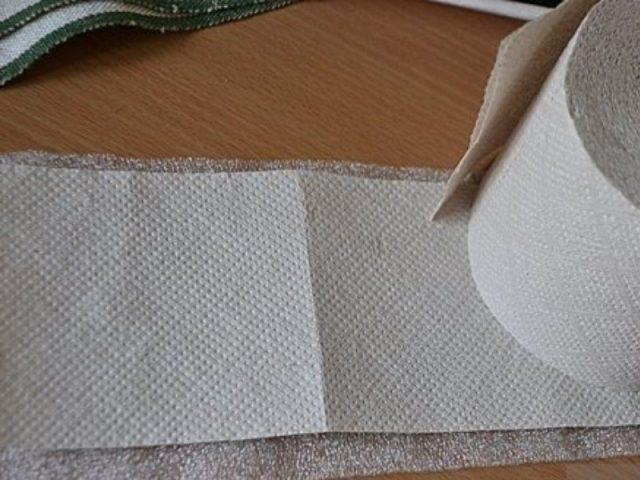
The toilet paper in the snail should not dry out throughout the entire period of seedling growth
Growing cabbage seedlings in film diapers
At home, it is also possible to sow cabbage seeds for seedlings and in diapers. This method has some differences from the snail method.
Procedure:
- Cut any film into strips 10 cm wide.
- Spread one of them on a flat surface.
- Place toilet paper folded in 2-3 layers on top.
- Moisten it with a spray bottle.
- Step back 1-2 cm from the top and place cabbage seeds in a row at a distance of 2-2.5 cm.
- Cover them with another layer of damp toilet paper and cover with a second strip of film.
- Roll up the diaper and place it in a bundle in a plastic container.
- Pour water into the container so that the toilet paper is immersed 1.5-2 cm in it.
After planting, you need to place the diaper in a dark place with a temperature of +20-23 ° C and cover it with a bag on top to create a greenhouse effect. When sprouts appear, move the structure to a light windowsill and lower the maintenance regime to +15-17 °C. In the future, you need to care for growing cabbage seedlings in the same way as snails.
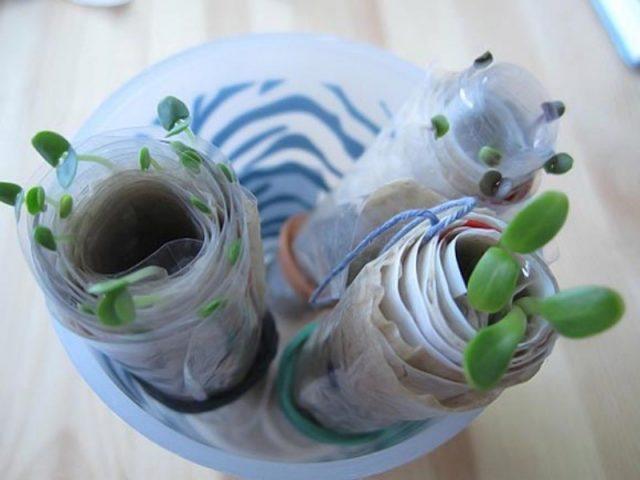
If desired, you can make short diapers by planting 2-3 seeds in them
When the seedlings grow 2-3 true leaves, the diaper needs to be unwound, a layer of nutrient substrate added, and then rolled up again. This will allow the root system to strengthen and prepare for transplanting into the ground.You can clearly see how to properly plant cabbage in diapers in the video:
Possible mistakes
Judging by the reviews, not all gardeners were able to correctly master the methods of growing seedlings without soil at home. Most often, the reason for this is mistakes made. Therefore, in order for the result to please you, and for the cabbage seedlings to turn out strong and healthy, you need to study them in advance.
Possible mistakes:
- Seedlings should be opened and transferred to a bright place immediately after sprouts appear.
- You cannot keep seedlings in toilet paper for a long time; when real leaves appear, it is recommended to add a nutrient substrate.
- It is necessary to roll the snails and films tightly so that the seeds do not slide down.
- After planting, it is important not to confuse the top and bottom of the snail and the diaper.
- It is impossible to keep seedlings in such structures for a long time, so it is important to correctly calculate the sowing date.
Transplanting seedlings into the ground
Cabbage seedlings grown in snails and diapers tolerate transplantation to a permanent location with minimal stress. After all, to carry it out, you only need to unfold the structure, so the root system is not damaged.
To transplant, you need to prepare the holes in advance, water them, and when the water is absorbed, transfer the strengthened seedlings. In this case, the plants must be buried down to the first leaves, which promotes the growth of a powerful root system.
Conclusion
Cabbage seedlings in diapers and snails turn out strong and healthy if the sowing time and the rules for further care are followed.Therefore, before using this method, you need to familiarize yourself with its subtleties in advance, which are recommended to be strictly observed. Only in this case, the process of growing cabbage without soil will give excellent results without much difficulty.
